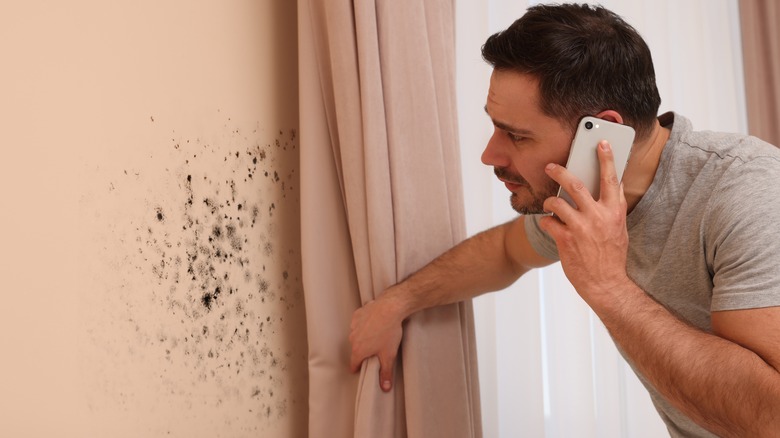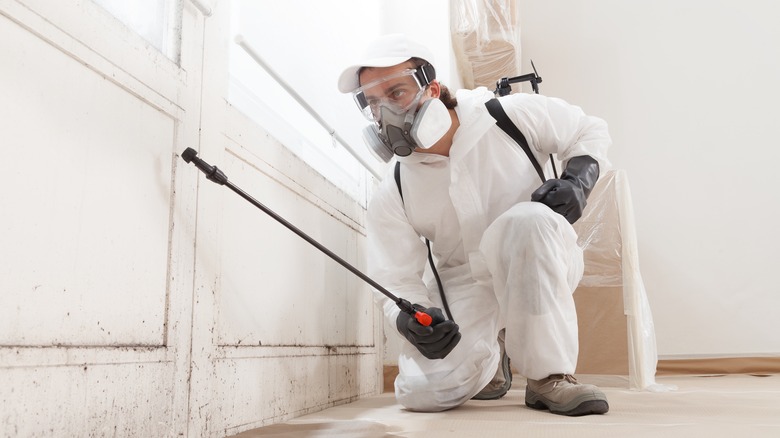Why You Should Think Twice About Using An At Home Mold Test Kit
You feel tired and lethargic. Or you're coughing more than normal. Perhaps you notice suspicious-looking black spots on your bathroom ceiling — maybe all of the above. You start to frantically Google what's going on, searching for an explanation. Results flood in, and several point to a potential mold infestation as the culprit. Luckily, in your research, you also come across several inexpensive and seemingly easy DIY at-home mold testing kits. Problem solved, right?
Not necessarily. At-home mold test kits, which typically come with a dish that is meant to be left out for a specified period of time and collect spores, are notoriously unreliable. Both false negatives and false positives are common, one reason being that all homes contain some level of mold spores. If the test indicates a mold presence, you'll have to send the sample back to the company you purchased the test from, but not before paying an additional fee in order to find out which type of mold it is. And even then, the results will typically just list the scientific name for the mold and no additional information or suggestions. So what to do?
If you think you might have a serious problem, hire a professional to inspect
First, know that mold can grow in your home wherever there is adequate moisture, including under shampoo bottles in your bathroom and in the dark, hidden corners of your basement. It can present in a variety of colors, typically black, green, gray, brown, and white, can be slimy or fuzzy, and usually has a musty odor. If you suspect that there might be mold growing in your house, you should test or treat it immediately, as it will damage the surface it is on and can potentially be hazardous to your health.
According to the Environmental Protection Agency, "sampling for mold should be conducted by professionals who have specific experience in designing mold sampling protocols, sampling methods and interpreting results." Beyond that, hiring certified professionals who only test for mold, not treat it, is important as that could incentivize certain results. A professional inspection will determine where and why abnormally high levels of moisture could be causing mold. Air monitoring and sampling will also be conducted, and all specimens will be sent to accredited labs to determine the amount and type of mold, as well as if it presents a health risk and requires remediation. If remediation is necessary, the inspector will return to the premises once it is complete to ensure that the mold has been completely removed. This kind of inspection typically runs from roughly $250 to $500.

